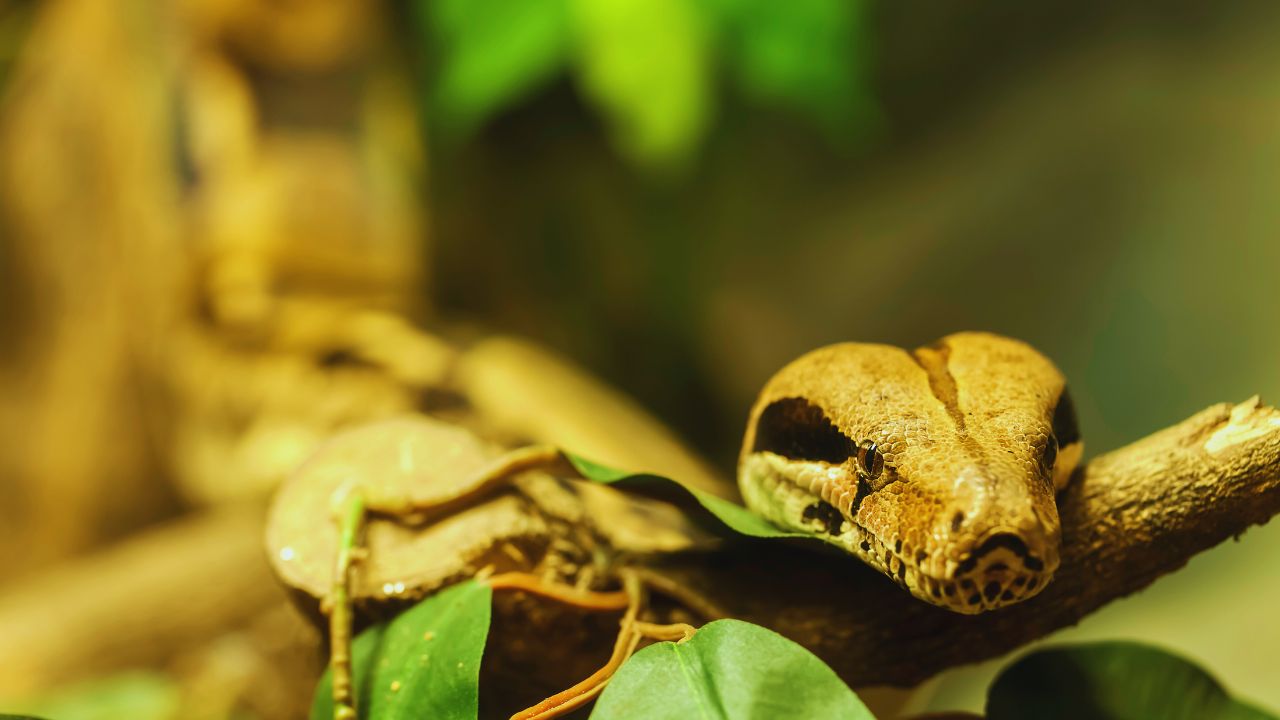Since its introduction in the late 1990s, the Moonglow boa—a compelling and unique snake morph—has become more and more well-known among reptile aficionados. Moonglow boas are created by the selective breeding of snakes with certain genetic mutations, much like designer morphs of other species, such ball pythons. This page explores the fascinating characteristics of the Moonglow boa, including its feeding, habitat needs, behavior, genetics, and related species.
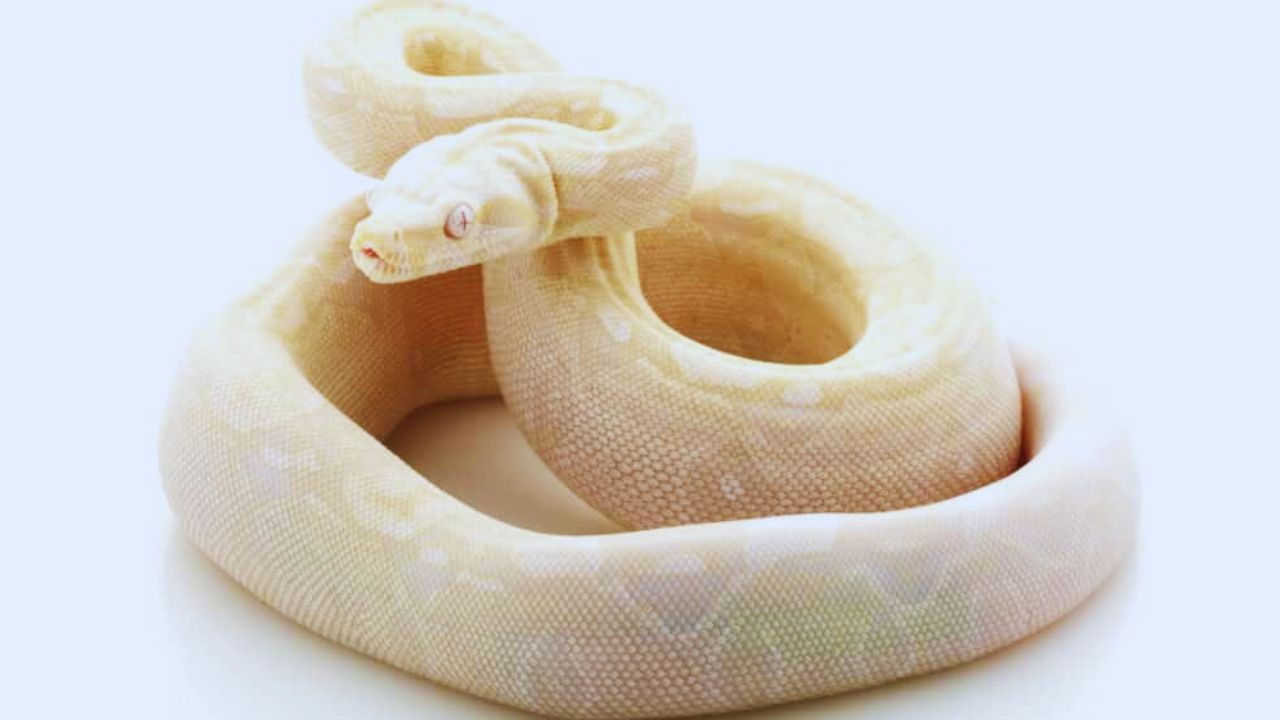
| Category | Details |
|---|---|
| Scientific Classification | |
| Kingdom | Animalia |
| Phylum | Chordata |
| Class | Reptilia |
| Order | Squamata |
| Family | Boidae |
| Genus | Boa |
| Scientific Name | Boa constrictor |
| Conservation Status | Least Concern |
| Locations | Central America, North America, and South America |
Genetics and Origins
The Moonglow boa is a hybrid of three distinct genetic traits: albino, hypomelanistic, and anerythristic type I genes. It is the result of selective breeding. These characteristics are essential to the morph’s distinctive look, which is highlighted by its eye-catching white coloring. The anerythristic gene removes red tones from the snake’s coloring, while the hypomelanistic gene lessens the quantity of dark pigmentation to produce a lighter pattern. The albino gene alters the overall pattern and reduces the reds even more, giving the Moonglow boa its characteristic pale, nearly white look.
Although several have been crossed with Boa constrictor to improve certain qualities, the majority of boa morphs are descended from Boa imperator. The incompatibility of anerythristic type I and type II genes is important to note since it often leads to conventional patterns instead of the intended “super” anerythristic morph.
Classification of Science
Although they have close genetic relations to Boa constrictors, the Moonglow boa’s primary ancestor is Boa imperator. For pet boas, genetic testing is often the only reliable way to determine their species. Although the Moonglow boa is a designer morph and cannot be found in the wild, knowing how to classify it makes it easier to identify its near relatives and their typical habits.
Visual appeal and physical attributes
Boa constrictors are known for their large size and sturdy construction. They have vertical pupils, recurved teeth, and powerful jaws. Even the Moonglow morph, the majority of boas kept in captivity, does not reach the same size as their wild counterparts. Although wild boas may grow up to 13 feet long, captive-bred species, such as Moonglow boas, usually stay smaller.
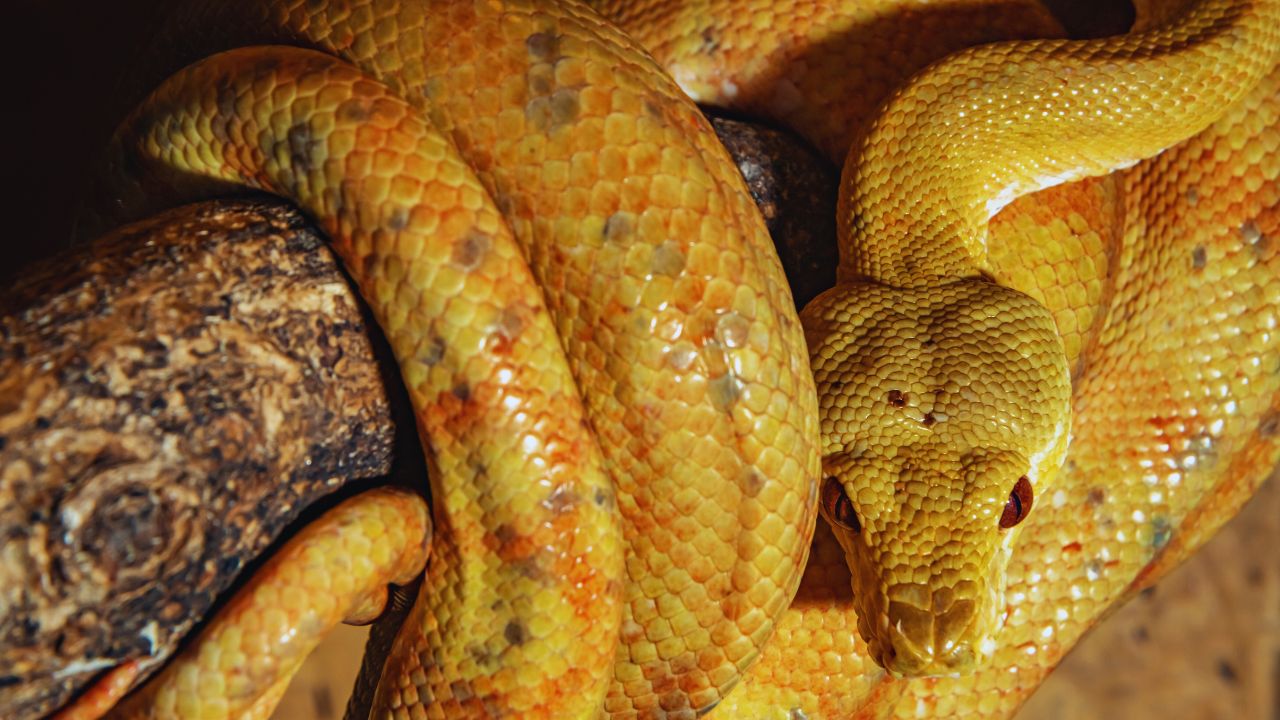
Generally tan or gray in base color, wild boa constrictors have saddle-like patterns in brown tones that may become crimson or red-orange as they approach the tail. These marks may range in strength from deep chocolate to more muted colors, depending on their genetic heritage. In particular, moonglow boas are bred to have almost white coloring at birth, which changes to a more golden tone as they become older. Their remarkable look puts them in great demand among collectors of reptiles.
Moonglow Boa Facts
| Category | Details |
|---|---|
| Prey | Rats, mice, birds, rabbits, chickens |
| Main Prey | Rodents |
| Name of Young | Neonates, snakelets |
| Group Behavior | Solitary, except during mating season |
| Fun Fact | Moonglow babies result from mixing three genetic traits. |
| Most Distinctive Feature | White or nearly white |
| Gestation Period | 100-120 days |
| Litter Size | 10-65 |
| Diet | Omnivore |
| Lifestyle | Diurnal/Nocturnal |
| Favorite Food | Depends on size; larger boas can eat rabbits and chickens. |
| Location | South America |
Conduct and Attitude
Like many other boas, moonglows display a variety of behaviors that are shaped by their upbringing and surroundings. Breeding captive In general, moonglow boas are gentle and manageable. Hatchlings, on the other hand, have the potential to be more temperamental and to behave defensively. These boas often grow more docile and at ease with people with consistent, careful handling.
Although they may be active at any time of day, boas are mostly nocturnal. Because of this characteristic, they need a carefully controlled day-night cycle in their cage in order to stay healthy. As ambush predators, moonglow boas would much rather wait in ambush than go on active hunts for their prey. While adults often only need meals every few weeks, newborns need to be fed once a week. Boas hunt by staying still and waiting for their prey to get close enough to attack.
Requirements for Habitat
For a Moonglow boa to be healthy and long-lived, it is essential to provide a suitable environment. A well-designed cage may cost more than the snake itself, but the snake’s welfare depends on the quality of the habitat arrangement. Because boas are semi-arboreal, they spend a lot of time both climbing and on the ground. Larger boas benefit from having access to climbing apparatus, even if they may not climb very high.
Enough room should be provided in the enclosure for the snake to grow. Smaller cages are suitable for young boas, but as they become larger, the habitat has to be updated to accommodate them. For the snake to feel safe, the cage should ideally provide a variety of hiding places.
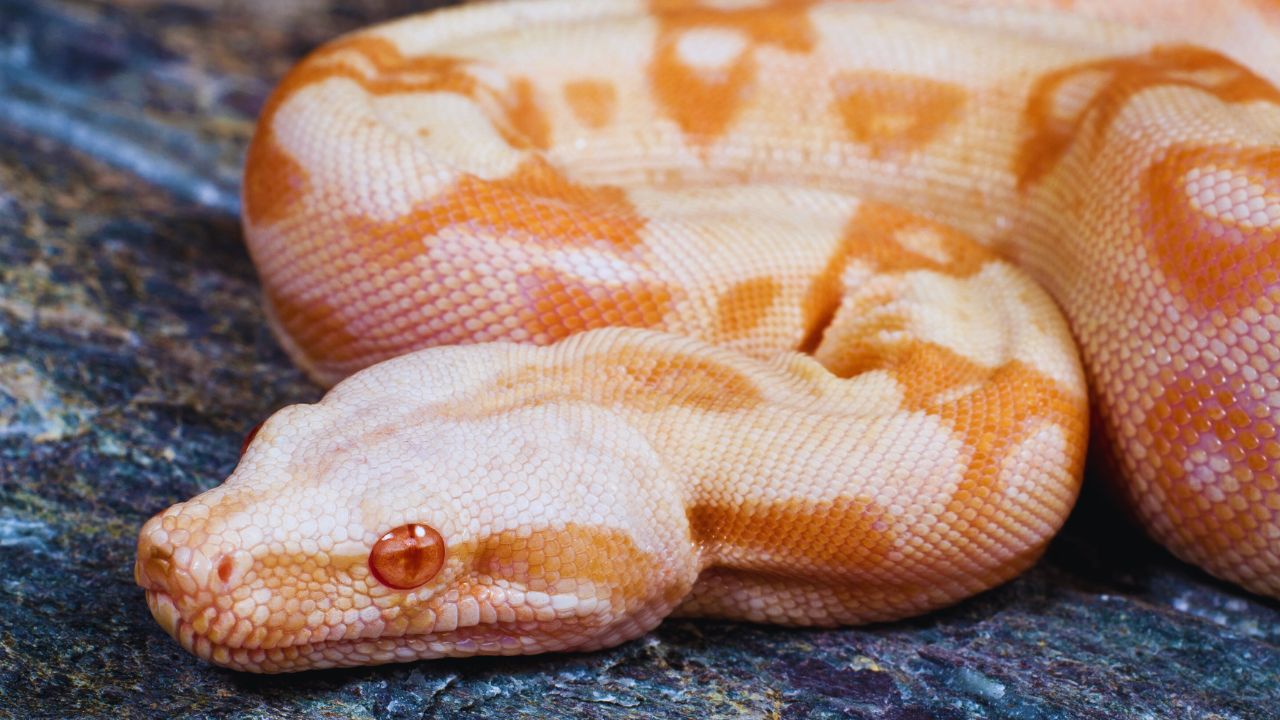
Humidity, lighting, and warmth are essential elements of a boa’s environment. To flourish, boas need a constant tropical or near-tropical climate, which is similar to their native habitat in Central and South America. Since snakes are less able than mammals to adjust to changing environmental circumstances, it is essential to maintain consistent levels of humidity and temperature.
Moonglow Boa Physical Characteristics
| Category | Details |
|---|---|
| Color | Yellow, White |
| Skin Type | Scales |
| Lifespan | 20+ years |
| Length | Up to 13 feet |
| Age of Sexual Maturity | 2-4 years |
| Venomous | No |
| Aggression | Low |
Nutrition and Consumption
Boa constrictors eat a variety of animals in the wild, including rats, mice, rabbits, birds, and even small deer. It has even been reported that invasive boas in Florida prey on little pets like dogs and kittens. A Moonglow boa in captivity usually eats rats and mice, with larger prey items like rabbits and chickens added as the snake becomes bigger.
Because it is safer and more convenient, frozen prey is widely accessible from providers. Although live prey may be used, there is a chance that the snake may be hurt; thus, frozen possibilities are a better selection. For the boa’s growth and well-being, it is essential to follow the recommended feeding schedule.
Preservation and Demographic Situation
As a designer morph, the moonglow boa is only produced in captivity and is nonexistent in the wild. The actual population numbers of boas are not well documented, despite their widespread availability due to their appeal among snake lovers. Sites like Morphmarket provide a variety of Moonglow Boas for anyone who would want to purchase one.
The IUCN Red List of Threatened Species lists wild populations of Boa constrictor and Boa imperator as species of least concern. Although certain populations of these species have declined, especially on islands, they are still typically not regarded as vulnerable or near-threatened. Boa constrictors are preyed upon by bigger creatures, including ocelots, jaguars, birds of prey, and other snakes, in their native environments. Nonetheless, Moonglow boas raised in captivity are secure from these dangers.
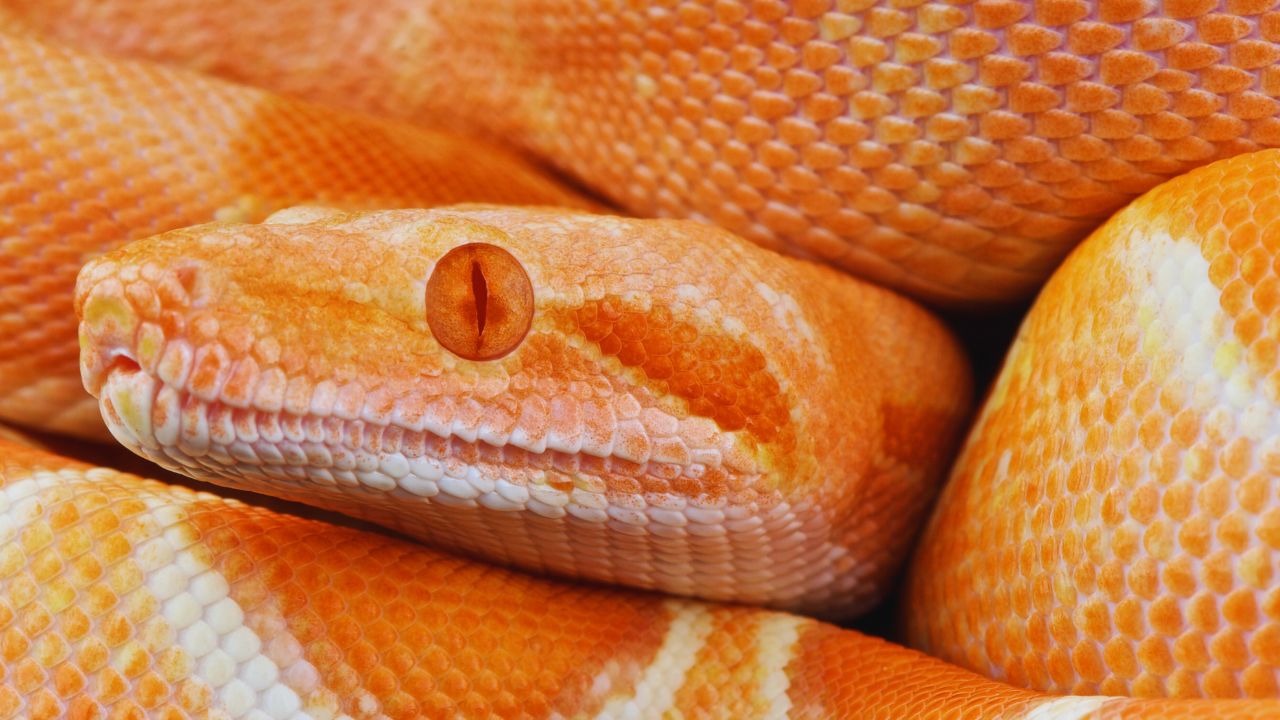
Lifespan and Reproduction
Moonglow boas may survive for more than 20 years in captivity and achieve sexual maturity between the ages of two and four. Female boas carry their eggs for 100–120 days after mating before giving birth. Newborns usually weigh about 15 inches and are self-sufficient from birth. Before putting the hatchlings in new homes, breeders often hold them for a few months to make sure they are well-established.
Associated Species
If you would want to learn more about boa species, some similar variants are as follows:
- The red-tailed boa, or Boa constrictor, is distinguished by its bold size and red tail colors.
- The smaller, more arboreal Cuban Boa (Chilabothrus angulatus) is a native species of boa.
- The Rainbow Boa, or Epicrates cenchria, is distinguished by its vivid colors and iridescent shine.
One particularly noteworthy illustration of the possibility for selective breeding in reptiles is the Moonglow boa. For snake fans, its distinct look and enticing hue make it a favorite. Comprehending the genetic makeup, behavioral patterns, and maintenance needs of Moonglow boas guarantees that both reptile lovers and collectors may enjoy and appreciate these magnificent animals.
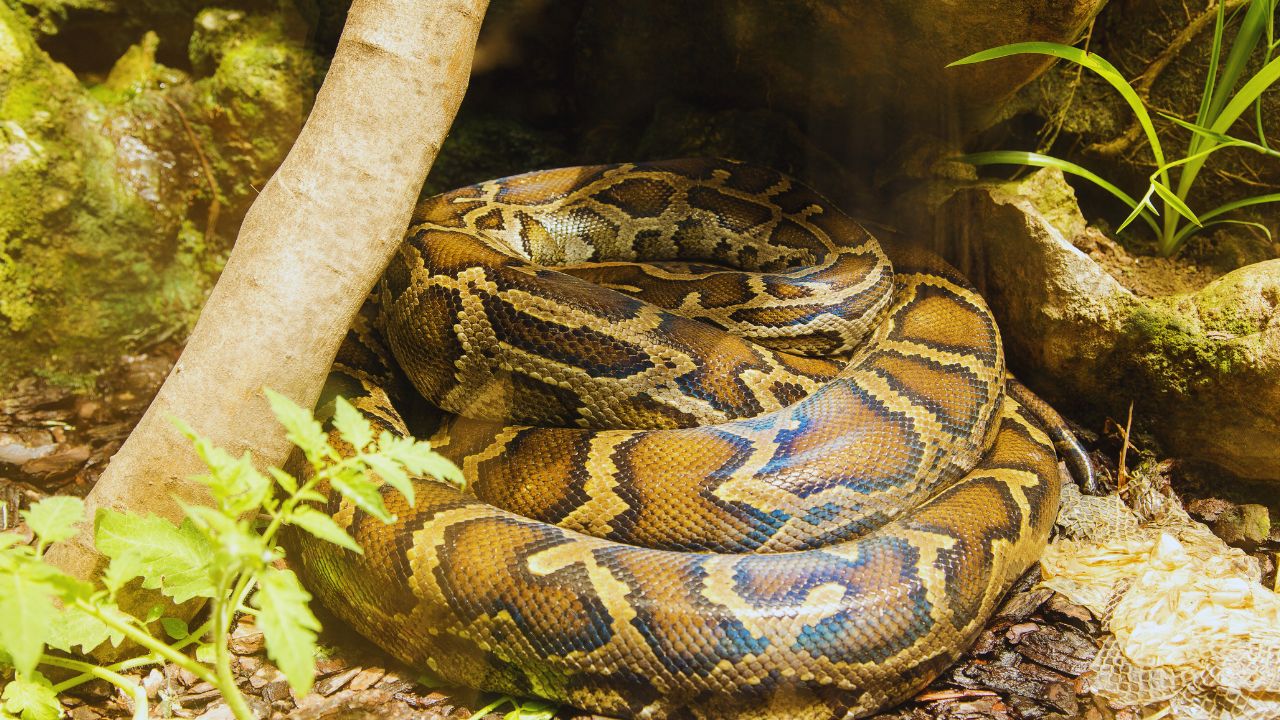
FAQs for Moonglow Boa
Moonglow boas consume what?
Moonglow boas prefer a range of small animals, including mice, rats, and rabbits, much like their wild counterparts. They consume birds as well.
Are moonglow boas aggressive?
Generally speaking, moonglow boas are not aggressive. Since they were raised in captivity, they are used to being handled. They are quite docile as long as you treat them with kindness.
Do moonglow boas have venom?
These snakes are nonvenomous, just as all boas are.
Where are moonglow boas available?
Moonglow boas are usually bought from breeders. A handful could be in rescue, but most are bought by committed keepers.





